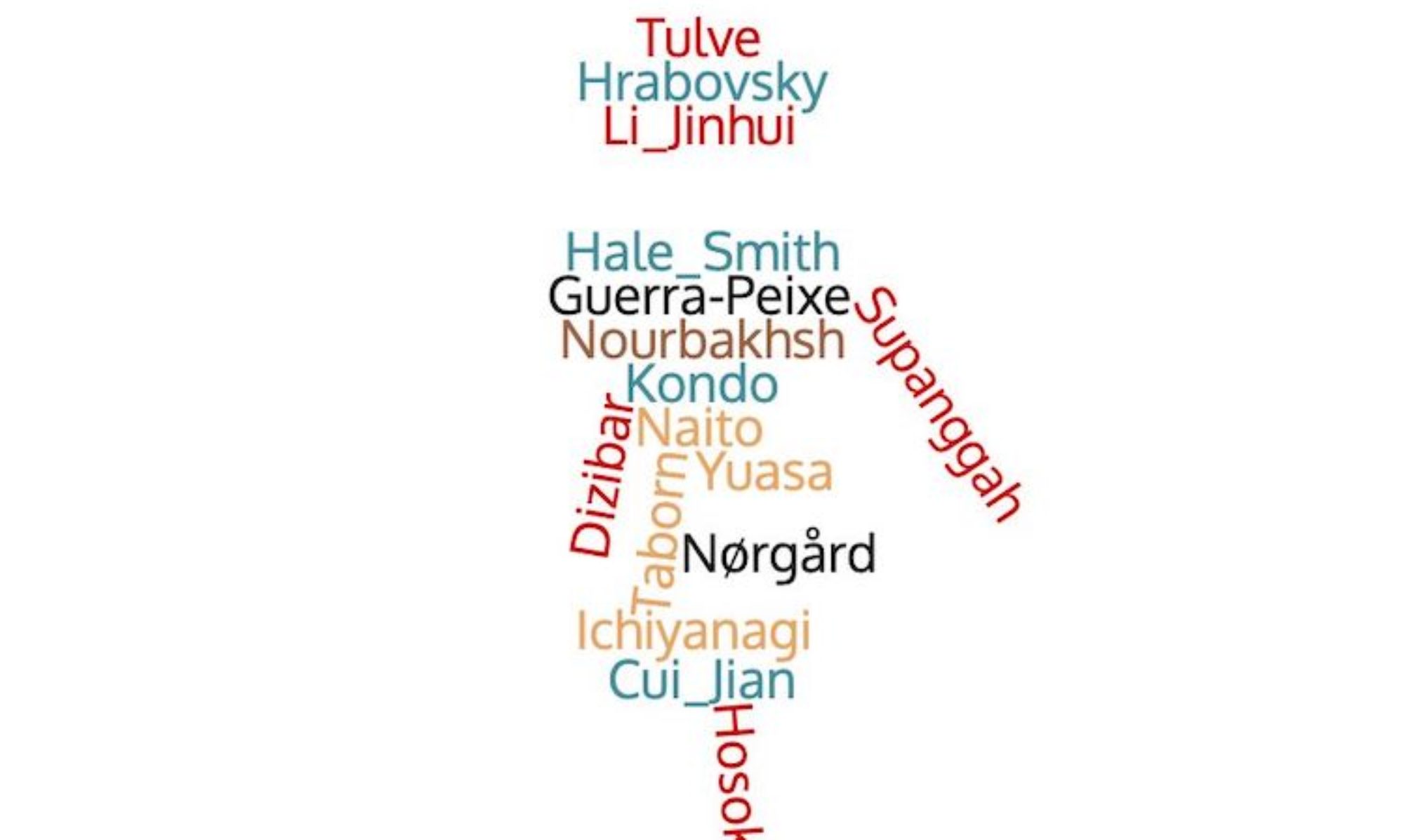By Mao Mengdan and Min Lingkang
This post is part of a series on 100 modern conservatory-trained Chinese composers from 1912 onwards who wrote symphonic, ensemble, and solo instrumental music using Western instruments, as well as choral and solo vocal music, adopting Western tonality or avant-garde techniques. They are regarded as key historical figures in and drivers of modern Chinese music history.
Jiang Dingxian (1912–2000), born in Wuhan, Hubei Province, was a prominent Chinese composer known for his works such as the piano piece “Lullaby,” the symphonic poem “Misty Waves on the River,” the symphony “Vicissitudes,” the film music for “Early Spring in February,” and the collection “Selected Songs of Jiang Dingxian.” He was deeply influenced by the revolutionary context of his time, as his father had participated in the Xinhai Revolution.
In 1930, Jiang was admitted to the Shanghai Conservatory of Music, where he studied composition under Huang Zi and piano, excelling in both. During his studies, he composed many songs and participated in various performances. His piano piece “Lullaby” won the second prize in a competition for Chinese-style piano pieces, organized by Alexander Tcherepnin.
In the autumn of 1934, Jiang became the music editor for the Shaanxi Provincial Department of Education. Two years later, he worked with the Experimental Orchestra of the Shanghai Amateur Experimental Drama Troupe, conducting, composing, and performing piano. After the outbreak of the Second Sino-Japanese War, he held various positions, including editor for the Ministry of Education’s Music Education Committee and professor of composition and piano at the Hubei Institute of Education.
In 1936, Jiang composed the song “Years Go By” (selected as one of the classic Chinese music pieces of the 20th century in 1993), the theme song “New China March” for the film “Life and Death with the Same Heart,” and music for several plays. During the war, he composed patriotic songs such as “Kill the Traitors,” “Fight the War to the End,” “For the Sake of the Motherland,” “Green Blood,” and “National Mourning,” as well as pieces like “The Cry of the Deer” (chorus), “Waves,” “Trees,” “Little Horse,” and supported students in researching, arranging, and singing folk songs, including the popular “Kangding Love Song.”
In 1950, when the Shanghai Conservatory of Music merged into the newly established Central Conservatory of Music, Jiang was appointed at the latter as a professor and head of the composition department. From 1961 to 1984, he served as the vice-president of the Central Conservatory of Music. He was a member of the fifth to seventh National Committee of the Chinese People’s Political Consultative Conference, attended the first to fourth National Congress of Literary and Art Workers, served as a member of the Federation of Literary and Art Circles, and was a member and executive member of the first to fourth councils of the Chinese Musicians Association. He also represented the Chinese music community internationally, serving as a judge at the World Festival of Youth and Students in Poland, attending commemorative events for Hungarian composers Béla Bartók and Franz Liszt, and participating in the Asian Composers Conference.
Throughout his 60-year teaching career, Jiang’s students spread across the world, contributing significantly to the field of music education. He was known for his broad knowledge, rich experience, and ability to inspire independent thinking in his students. Jiang also wrote articles such as “The Problem of National Style in Harmony,” “Commemorating the 150th Anniversary of the Birth of Hungarian Musician Liszt,” and “Commemorating Huang Zi.”
“Lullaby,” composed in 1932, is a piano piece in ternary form and one of Jiang’s award-winning works in the 1934 competition organized by Tcherepnin. The piece is notable for its use of a five-note pentatonic la-mode mode theme, creating a contemplative and melancholic atmosphere. The music is characterized by its simple and natural flow, colorful tonality, and strong Chinese style. The structure of “Lullaby” consists of a first section that introduces a lyrical Chinese-style theme, a contrasting middle section with impressionistic elements, and a final section that revisits the main theme with ornamental variations, ending the piece in a dream-like ambiance.
You can watch a performance of Jiang Dingxian’s “Lullaby” at the following link: https://www.bilibili.com/video/BV1Wy4y1H7WJ?share_source=copy_web&vd_source=4681f0684a5c74dd125d397ca5882ba3
